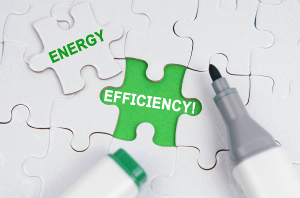From the November 2021 issue of HealthCare Business News magazine
By Clark Reed
Helping a hospital become more energy efficient is a lot like helping patients lose excess weight. It can be a bit daunting at first but ultimately puts the hospital in a better place — more financially healthy, resilient, and environmentally sustainable. No hospital becomes energy efficient by accident. Even though building technologies like lighting are more efficient today and building codes are better, hospitals are highly complex buildings. Energy savings are not automatic. Efficient equipment can be oversized, poorly maintained, or installed improperly and not deliver the savings. That’s why hospitals that save energy create a culture around saving it. It’s not just a job for facility operations. It’s everyone’s job — from environmental services, to clinicians, to the administration.
Benchmarking is first step



Ad Statistics
Times Displayed: 172944
Times Visited: 3140 For those who need to move fast and expand clinical capabilities -- and would love new equipment -- the uCT 550 Advance offers a new fully configured 80-slice CT in up to 2 weeks with routine maintenance and parts and Software Upgrades for Life™ included.
Up to 30% of energy is used unnecessarily in buildings. For energy-intensive buildings like hospitals, that energy waste can translate into millions of dollars lost every year that could otherwise go to providing more healthcare services. To learn how hospitals compare to themselves over time or to their peers across the country, hospitals benchmark their energy performance. Benchmarking is a monthly activity that also offers direct feedback into the effectiveness of energy-saving activities. It allows facility managers to verify savings from energy projects, to be notified of failing systems that cause a spike in energy use, or to track progress toward an energy goal.
65% of hospitals measure and track their energy in ENERGY STAR Portfolio Manager®, a free online tool created by the U.S. EPA and used by thousands of organizations to benchmark their buildings’ energy and water consumption. Hospitals use Portfolio Manager to generate a 1 to 100 ENERGY STAR score that compares their energy use to other, similar hospitals nationwide. A score of 50 indicates the median level of energy performance while lower scores indicate varying degrees of energy waste and inefficiency.
The most energy efficient buildings in the U.S. can earn ENERGY STAR certification just like consumer products for scores of 75 or higher, meaning that they perform better than 75% of similar buildings nationwide. ENERGY STAR certified buildings consistently use, on average, 35% less energy than their peers and emit approximately 35% less carbon dioxide. To date, over 37,000 buildings have earned ENERGY STAR certification, including 342 hospitals, 211 medical offices, and 271 senior living communities.

